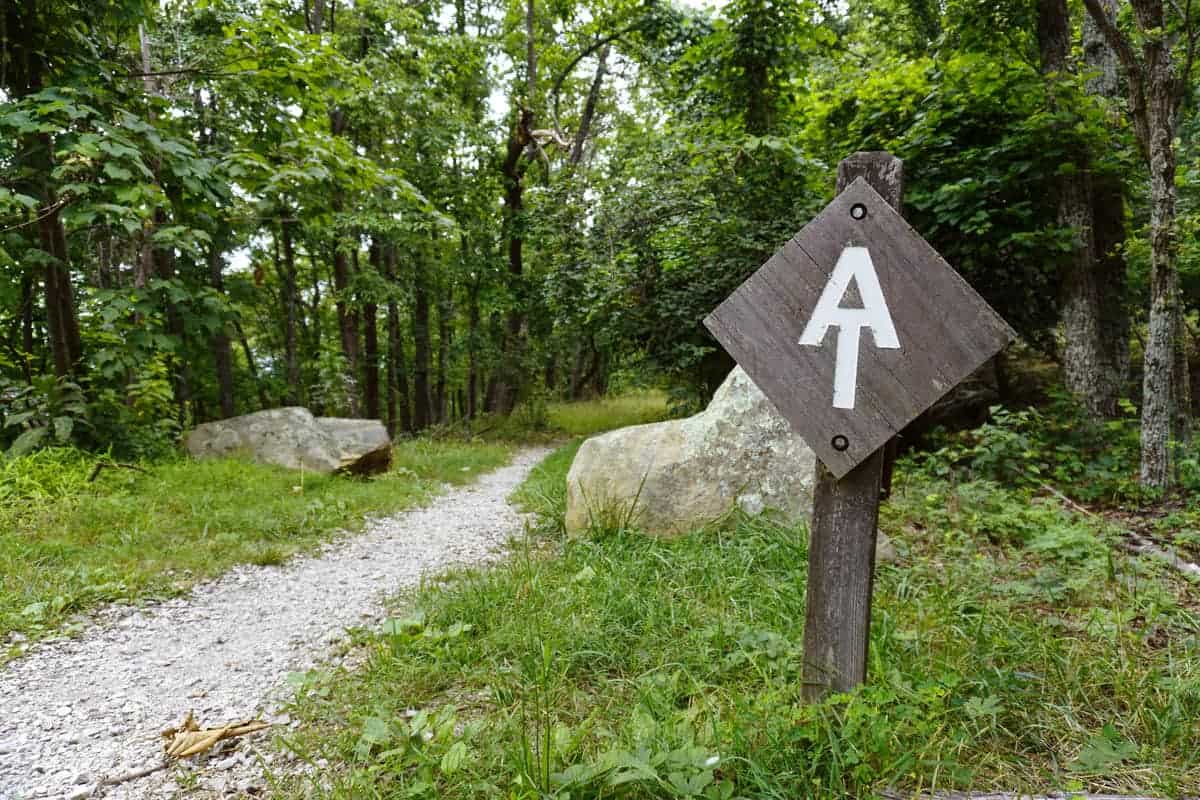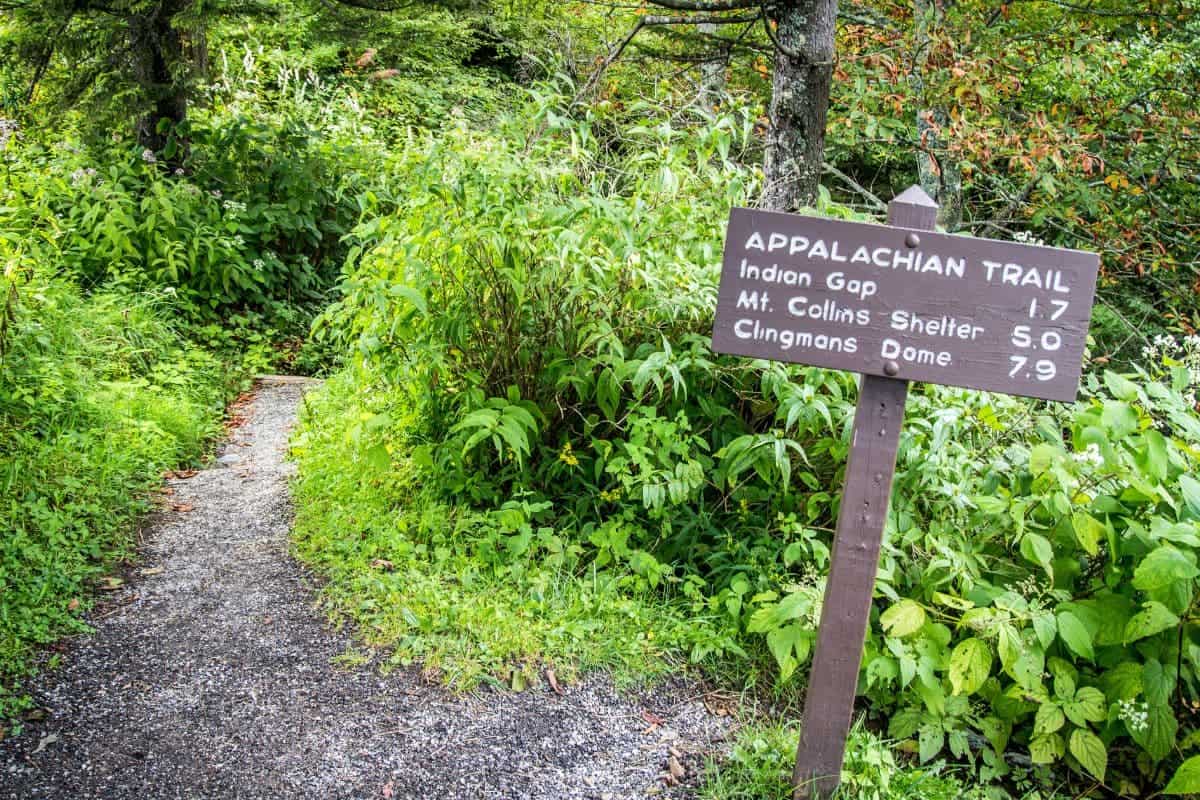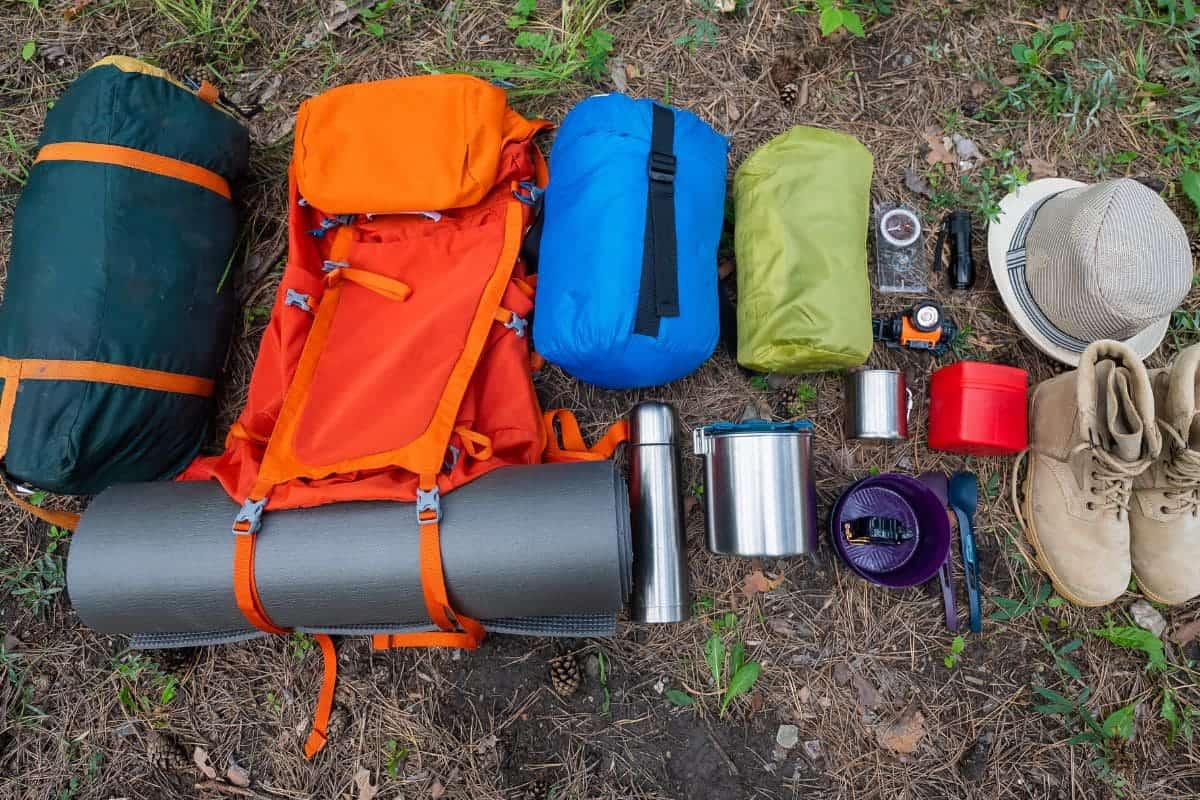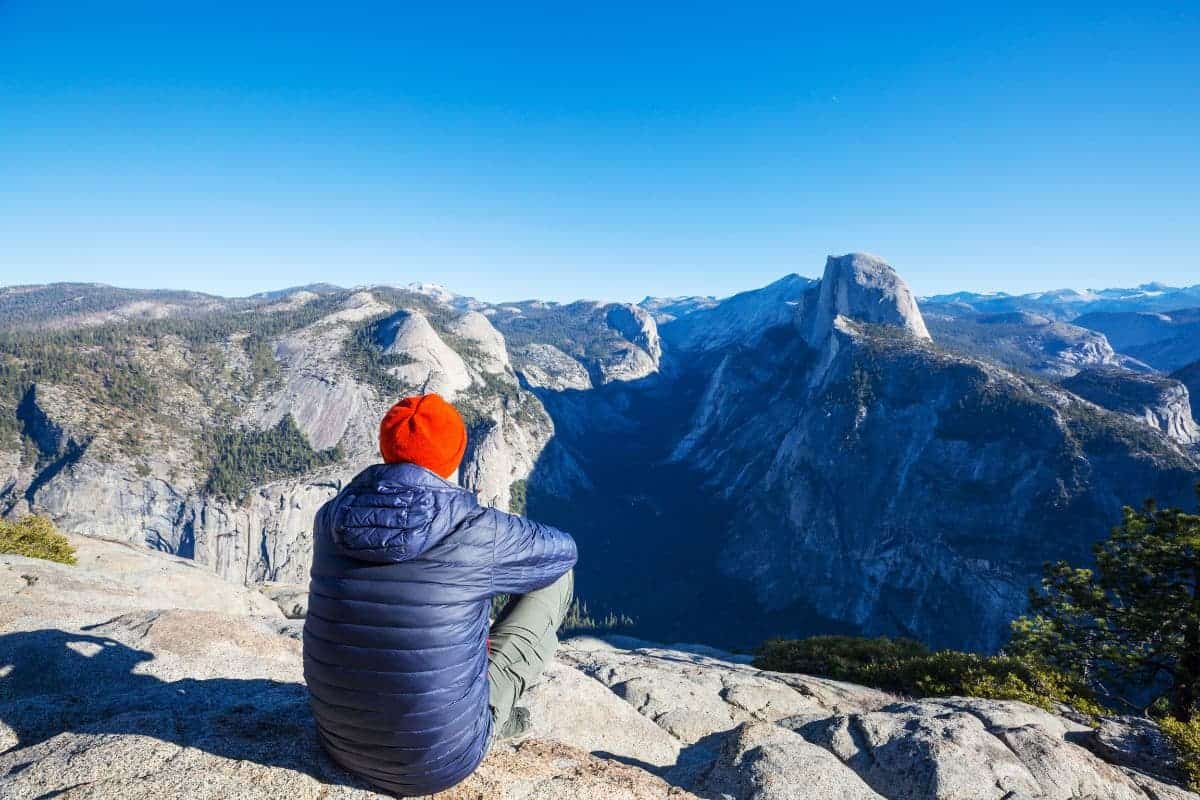Going on a long-distance hiking trail is something most people never will do in their life. Maybe they don’t know how freeing and exciting a long trail can be.
Really it’s something to be proud of.
These long distance trails are not just about endurance; they offer a chance to deeply connect with nature, encounter wildlife, and absorb the essence of America’s expansive wilderness.
But, you only have so many hikes in you. That’s why I put together this guide, to find the best long-distance hiking trails in America.
Key Takeaways
- Long-distance hiking offers a chance to unplug from daily life and reconnect with nature.
- Preparing for such a hike involves logistical planning and physical readiness.
- Trails like the Pacific Crest, Appalachian, and Continental Divide provide unique experiences.
The Magic of Long-Distance Trails in the US

Starting a hike on a long-distance trail in the US means more than just walking on a path. You are going on a big adventure through some of the most wild and stunning places in North America.
A long-distance hike is not just a physical journey but a mental one as well. Their comes a certin point where fituge set in, and you would really just rather be at home.
That happens to me, but the feeling passes quickly.
As you move through the wilderness, you encounter both the solitude of the trail and the camaraderie of fellow hikers.
Here are some of the epic USA trails to hike:You can think of these as the Big Three!
| USA Trails | Highlights | What to Expect |
|---|---|---|
| Appalachian Trail | Experience the East Coast’s sprawling woodlands. | Seasonal wildflowers, deciduous forests, summit views |
| Pacific Crest Trail | Witness the West Coast’s volcanic vistas. | Desert landscapes, snow-capped peaks, coastal forests |
| Continental Divide Trail | Travel the Rocky Mountains’ rugged backbone. | Remote wilderness, diverse ecosystems, high elevation challenges |
Iconic Trails of America
1. Appalachian Trail

The Appalachian Trail (AT) is a classic American trek that spans approximately 2,200 miles. Starting at Springer Mountain in Georgia and finishing at Mount Katahdin in Maine, this trail offers a variety of landscapes.
You’ll venture through lush forests and rolling hills, and occasionally, you can enjoy stunning panoramic views from the mountaintops. The AT is known not only for its length but for the community of hikers who often share their journey.
- States Covered: Georgia, Maine, and 12 others
- Highest Point: Clingman’s Dome at 6,643 feet
2. Pacific Crest Trail

Being from California this is where I got most of my trail time done. If you havn’t been, it’s worth the trip to make it over here.
Stretch your legs on the Pacific Crest Trail (PCT), a massive 2,650-mile journey that will take you through California, Oregon, and Washington, offering vibrant contrasts from scorching deserts to glacier-flanked mountains.
Along the PCT, you’ll tread paths that cut through several national parks, including the scenic Yosemite. It’s a challenge, yes, but the varied ecosystems and stunning landscapes make every step worth it.
- Scenic Highlights: Yosemite National Park, Cascade Range
- Trail Terrains: Deserts, forests, and high-alpine environments
3. Continental Divide Trail

For a truly rugged experience, the Continental Divide Trail (CDT) weaves a path along the Rocky Mountains.
Spanning about 3,100 miles, the trail traverses five states, taking you through Montana, along the Continental Divide, and into New Mexico.
It’s less trafficked than the AT or PCT, which is a big plus, giving you moments of solitude and unspoiled nature. The CDT is as wild as it is beautiful, offering a slice of America’s untamed spirit.
- States Along the Route: Montana, New Mexico, and three others
- Natural Features: Rocky Mountains, open grasslands, and rugged wilderness
Planning Your Hike

Before you set foot on the trail, having a solid plan is as crucial as your backpack. Getting the right gear, picking a trail that matches your skills, and understanding the weather can make or break your adventure.
Choosing the Right Trail
For instance, The Appalachian Trail is a popular choice if you’re looking for an accessible hike that spans 14 states. Or, if you crave a taste of high elevations and diverse landscapes, the Pacific Crest Trail might be the one for you.
Consider factors like distance, difficulty, and what you want to experience.
What to Pack:
Your gear list is pivotal for a successful hike. Start with the “Big Three”:
- Comfort and fit are key.
- Tent or hammock depending on the trail.
- A sleeping bag appropriate for the lowest temperatures.
Core Mountaineering Pro-Tip: For a safe hiking experience, make sure to pack the essentials. This includes a water filtration system for access to clean water, durable hiking boots for challenging terrains, and reliable navigation tools.
Additionally, always carry a first aid kit for emergencies and extra food to sustain energy levels throughout your journey.
Navigating Weather and Terrain
You’ll face various weather conditions and terrains, from the rain forests of the Pacific Northwest to the arid deserts of the Southwest.
Therefore, always check the weather forecast and plan accordingly. Wear layers to adapt to changing conditions and protect against both the sun and cold.
Know your route’s elevation changes and prepare for rugged paths; durable gear and a well-thought-out plan can help you tackle steep mountains.
The Wilderness Experience on Long Trails

Hiking Through National Parks and Forests
You’ll go through Yosemite Valley, with its iconic granite cliffs and waterfalls, and trek the green mountains of national parks like Great Smoky Mountains National Park.
Imagine the serenity of camping beneath a canopy of stars surrounded by these ancient forests that tell stories older than time. Each step is a chance to breathe in the beauty of wilderness areas that act as the silent guardians of American heritage and adventure.
Prepare to meet the locals on your hike, and by locals, we mean the black bears, perhaps even a grizzly bear if you’re up in the north.
Remember, these creatures are a precious part of the wilderness. From the tiny insects that pollinate wildflowers to the deer that graze in the meadows, you’re a guest in their home.
Keep your eyes peeled and your camera ready for nature’s candid moments. Some of the best pics I have when on a trail I got just in the nick of time. A few moments later, and the moment would have passed.
Leave No Trace Hiking Ethics
It’s not just about the adventure; it’s how you adventure.
So, follow the Leave No Trace principles to minimize your impact:
- Know the regulations and special concerns of the area you’ll visit.
- Stick to the trail and camp at designated sites.
- Pack it in, pack it out.
- Preserve the past; examine, but do not touch, cultural or historic structures and artifacts.
- Use a camp stove for cooking and enjoy campfires responsibly.
- Observe wildlife from a distance and never feed them.
- Yield to other users on the trail and keep noises to a minimum.
If you’re informal with some of this, you might be new to hiking. If so, make sure to check out our Essential Survival Tips for Hiking. In this article, I have stuff like Leave No Trace and other valuable advice for the new backpacker.
Beyond the Trail

Exploring Towns
As you’re backpacking, you’ll find towns just off the beaten path. These places offer a chance to immerse in local culture and restock your supplies.
Get a meal in a quaint diner in Julian, CA, after trekking portions of the Pacific Crest Trail, or experiencing the warm hospitality of Damascus, VA, affectionately referred to as “Trail Town USA” by those who hike the Appalachian Trail.
Must-Visit Towns:
- Julian, CA
- Damascus, VA
- Harpers Ferry, WV
Safety on and off the Trail
Make sure you know the locations of shelters along the way, and keep informed about upcoming weather conditions.
When crossing roads, remain vigilant—drivers might not expect to see a hiker.
CoreM Pro Tip: Always have a map and compass on hand, and know how to use them, even if equipped with a GPS device. Adventure’s unpredictability demands readiness for any situation.
Safety Essentials:
- Map and compass
- Weather updates
- Alertness at crossings
Of course there are other “essentials,” but this is really just a base to make sure you never go in the woods with them.
Trail Angels and Support Communities
Look out for local support communities that might host events, connect you with other hikers, and offer advice.
Platforms like the Appalachian Trail Conservancy or Pacific Crest Trail Association can help you find these angels and resources.
Supportive Entities:
- Local Trail Angels
- Hiker hostels
- Conservation groups
Trail-Specific Highlights
The Diversity of the Appalachian Trail
The Appalachian Trail (AT) is like a diverse buffet of eastern U.S. landscapes. Your feet will tread through no less than 14 states, from Georgia’s Springer Mountain all the way up to Mount Katahdin in Maine.
The states on the roster are:
- Georgia
- North Carolina
- Tennessee
- Virginia
- West Virginia
- Maryland
- Pennsylvania
- New Jersey
- New York
- Connecticut
- Massachusetts
- Vermont
- New Hampshire
- Maine
Along the way, you’ll experience the Appalachian Mountains’ iconic wooded paths, idyllic pastoral lands, and quirky little towns that are often full of trail magic.
CoreM Pro Tip: Stay alert to fully appreciate Vermont’s Green Mountains’ wild beauty and prepare for the rigorous adventure that awaits in New Hampshire’s White Mountains.
Unique Challenges of the Pacific Crest Trail
The Pacific Crest Trail (PCT) throws down the gauntlet with its varied environments. It spans 2,650 miles from the deserts of Southern California, slices through the Sierras, and capstones in the Cascades of Washington.
Here’s a quick peek at some terrain you’ll tackle:
- Blazing sun and scarce water sources.
- Snow, elevation, and some of the most breathtaking vistas.
- Old-growth forests and volcanic landscapes.
What makes the PCT particularly special are the bits that will test your mettle, like forging through the Sierra Nevada range, which could demand some serious snow navigation skills depending on the season.
Historic Paths Along the Continental Divide Trail
The Continental Divide Trail (CDT) not only serves as a rugged spine to the nation but is steeped in history.
This 3,100-mile trek is less a single path and more a series of routes running along the Continental Divide through New Mexico, Colorado, Wyoming, Idaho, and Montana.
It’s part of the coveted National Scenic Trails list, and for good reason.
Here are a few states you’ll wander through:
- New Mexico: Chihuahuan Desert and Gila National Forest.
- Colorado: The breathtaking Rocky Mountains with elevations that’ll have you gasping for both air and views.
- Wyoming: The remote Winds and the iconic Yellowstone National Park.
- Idaho & Montana: Shared sections, with lush forests and challenging ridge walks.
Each portion of the CDT presents its own array of challenges, like the remote snow-capped peaks of Colorado or the arid expanses in New Mexico.
Long-Distance Trail Extensions and Alternatives

Connecting Trails for Extended Adventures
1. Vermont’s Long Trail
If you’re traversing the Appalachian Trail and you find yourself in Vermont, consider taking a detour onto the Long Trail. As the oldest long-distance trail in the US, it stretches 273 miles and shares 100 miles with the AT.
- Colorado Trail & Continental Divide: For an even more elevated hike, you can connect the Colorado Trail to the Continental Divide Trail. This means you’ll experience both the lush landscapes of the Colorado Trail and the rugged terrain of the CDT.
- Arizona Trail & Pacific Crest Trail: Ambitious hikers can link the Arizona Trail with the Pacific Crest Trail (PCT). The Arizona Trail ends near the PCT’s start, making for an extended journey from the deserts to the Pacific coastline.
2. Shorter Treks with Long-Trail Experience
You can immerse yourself in a long-trail journey within a shorter framework, and the Tahoe Rim Trail is ideal for this. Circling Lake Tahoe, it spans about 165 miles and offers a condensed version of long-trail diversity.
- John Muir Trail: A section of the PCT, the John Muir Trail, provides the essence of long-trail hiking in a manageable span. The JMT runs through the Sierra Nevadas over approximately 211 miles.
- Florida Trail & Ice Age Trail: Looking for a warm hike or a glaciated path? You can opt for the subtropical landscapes of the 1,000-mile Florida Trail or the historical remains along the 1,200-mile Ice Age Trail in Wisconsin.
Overall, these extensions and alternatives offer unique experiences and challenges of their own, enabling you to customize your hiking adventure to match your endurance, available time, and scenic preferences.
Frequently Asked Questions
What are the top long-distance hiking trails in the United States?
You’ve got a variety of epic trails to choose from, but the best-known include the Appalachian Trail, the Pacific Crest Trail, and the Continental Divide Trail.
How long is the Appalachian Trail?
The Appalachian Trail stretches approximately 2,200 miles. It traverses the eastern United States from Springer Mountain in Georgia to Mount Katahdin in Maine.
Which trail is considered the longest hiking path in the US?
The American Discovery Trail is the longest coast-to-coast hiking and biking trail in the U.S., spanning about 6,800 miles across several states from Delaware to California.
Can you hike across the United States, and if so, which trail would you take?
Yes, you can hike across the country using the American Discovery Trail. It’s a mixture of city, forest, and desert paths that allows adventurers to experience a cross-section of the U.S.
What are the three major long-distance trails that hikers dream of completing in the US?
The Appalachian Trail, Pacific Crest Trail, and Continental Divide Trail are often referred to as the Triple Crown of long-distance hiking in the United States. Combined, they cover over 7,900 miles of terrain.
Are there any mobile apps recommended for navigating long-distance trails in the USA?
Popular choices among hikers include Guthook Guides and AllTrails. These apps offer detailed maps, waypoints, and user-contributed information about the trails.
Wrapping Up – Make These Trails A Gateway To Self Discovery
Ultimately, these trails serve as gateways to self-discovery and connection with the natural world. Conquering these trails, you’re not just a visitor; you become a part of the trail’s ongoing story of America’s natural beauty.
So, to my fellow hikers, may your journeys be filled with wonder, your challenges met with resilience, and your spirits uplifted by the raw beauty of the American wilderness. Here’s to the paths we choose, the memories we create, and the adventures that lie ahead.







